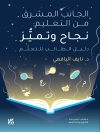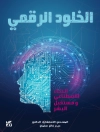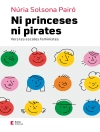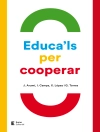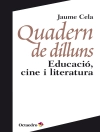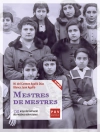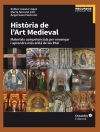The 5th edition of the prestigious AECT Handbook continues previous efforts to reach outside the traditional instructional design and technology community to the learning sciences and computer information systems communities toward developing a conceptualization of the field. However, given the pervasive and increasingly complex role technology now plays in education since the 1st edition of the Handbook in 1996, the editors have reorganized the research chapters in this edition to focus on the learning problems we are trying to solve with educational technologies, rather than to focus on the things we are using to solve those problems. Additionally, for the first time this edition of the Handbook reflects our field’s growing understanding of the importance of design scholarship to inform practice by including design case chapters. These changes for this edition of the Handbook are intended to bring educational technology research into the broader framework of educational research by elaborating on the role instructional design and technology plays as a scholarly discipline in addressing education’s increasingly complex issues.
- Provides comprehensive reviews of new developments in educational technology research and design practice.
- Includes concrete examples to guide future research and practice in the ways emerging technologies can be used to solve educational problems.
- Contains extensive references furnished to guide readers to the most recent research and design practice in the field of instructional design and technology.
İçerik tablosu
Foreword.- Chapter 1. Introduction to Research Chapters.- Chapter 2. Section 1: Understanding how instructional design/technology can help all learners be successful.- Chapter 3. Section 1: Understanding how instructional design/technology can help all learners be successful.- Chapter 4. Section 1: Understanding how instructional design/technology can help all learners be successful.- Chapter 5. Section 1: Understanding how instructional design/technology can help all learners be successful.- Chapter 6. Section 2: Understanding how to accommodate differences among learners through instructional design/technology.- Chapter 7. Section 2: Understanding how to accommodate differences among learners through instructional design/technology.- Chapter 8. Section 2: Understanding how to accommodate differences among learners through instructional design/technology.- Chapter 9. Section 2: Understanding how to accommodate differences among learners through instructional design/technology.- Chapter 10. Section 2: Understanding how to accommodate differences among learners through instructional design/technology.- Chapter 11. Section 2: Understanding how to accommodate differences among learners through instructional design/technology.- Chapter 12. Section 2: Understanding how to accommodate differences among learners through instructional design/technology.- Chapter 13. Section 3: Understanding the role instructional design/technology plays in achieving broader learning outcomes.- Chapter 14. Section 3: Understanding the role instructional design/technology plays in achieving broader learning outcomes.- Chapter 15. Section 3: Understanding the role instructional design/technology plays in achieving broader learning outcomes.- Chapter 16. Section 3: Understanding the role instructional design/technology plays in achieving broader learning outcomes.- Chapter 17. Section 3: Understanding the role instructional design/technology plays in achieving broader learning outcomes.- Chapter 18. Section 3: Understanding the role instructional design/technology plays in achieving broader learning outcomes.- Chapter 19. Section 4: Understanding how instructional design/technology contributes to learning outcomes within specific subject-matter domains.- Chapter 20. Section 4: Understanding how instructional design/technology contributes to learning outcomes within specific subject-matter domains.- Chapter 21. Section 4: Understanding how instructional design/technology contributes to learning outcomes within specific subject-matter domains.- Chapter 22. Section 4: Understanding how instructional design/technology contributes to learning outcomes within specific subject-matter domains.- Chapter 23. Section 5: Understanding the role instructional design/technology plays in different learning contexts.- Chapter 24. Section 5: Understanding the role instructional design/technology plays in different learning contexts.- Chapter 25. Section 6: Understanding the role instructionaldesign/technology plays in measuring and communicating learning outcomes.- Chapter 26. Section 6: Understanding the role instructional design/technology plays in measuring and communicating learning outcomes.- Chapter 27. Section 6: Understanding the role instructional design/technology plays in measuring and communicating learning outcomes.- Chapter 28. Research Chapters Afterword.- Chapter 29. Introduction to Design Case Chapters.- Chapter 30. Section 7: Design Case.- Chapter 31. Section 7: Design Case.- Chapter 32. Section 7: Design Case.- Chapter 33. Section 7: Design Case.- Chapter 34. Section 7: Design Case.- Chapter 35. Section 7: Design Case.- Chapter 36. Section 7: Design Case.- Chapter 37. Section 7: Design Case.- Chapter 38. Section 7: Design Case.- Chapter 39. Section 7: Design Case.- Chapter 40. Section 7: Design Case.- Chapter 41. Section 7: Design Case.- Chapter 42. Section 7: Design Case.- Chapter 43. Design Case Chapters Afterword.
Yazar hakkında
MJ Bishop is the Director of the Kirwan Center for Academic Innovation at the University System of Maryland, which researches best practice, disseminates information and offers professional development opportunities for faculty and administrators, all in support of the USM’s 12 public campuses. Prior to her current role, Bishop served as Program Director for Teaching, Learning and Technology at Lehigh University, where she was faculty member for 13 years in instructional design and technology. Jan Elen is Professor in the Department of Educational Sciences of the Katholieke University of Leuven. His research is oriented towards the design and use of computer-supported learning environments in educational settings. He is the coordinator of the newly- founded School of Education of the Association at Katholieke University of Leuven. Elizabeth Boling is Professor of Education and Associate Dean for Graduate Studies at Indiana University. Her research interests are in the use of images in instructional materials. She is also a designer of interactive multimedia and other forms of teaching and learning materials.
Vanessa Svihla is Associate Professor at the University of New Mexico. Her research interests focus on how people learn when they design. She is particularly interested in how people frame problems, how these activities relate to identity, agency and creativity, and ways to assess these complex disciplinary practices.


